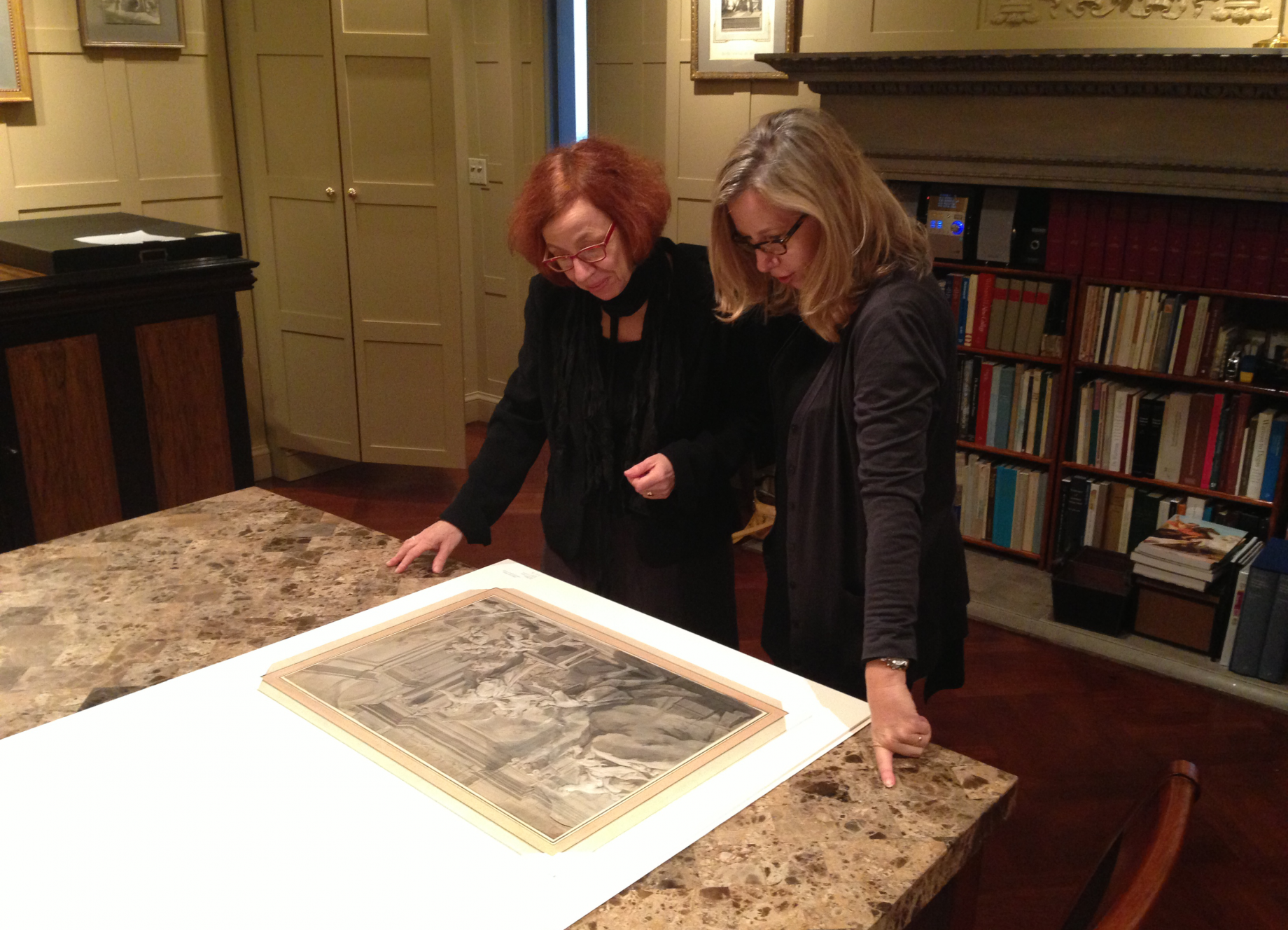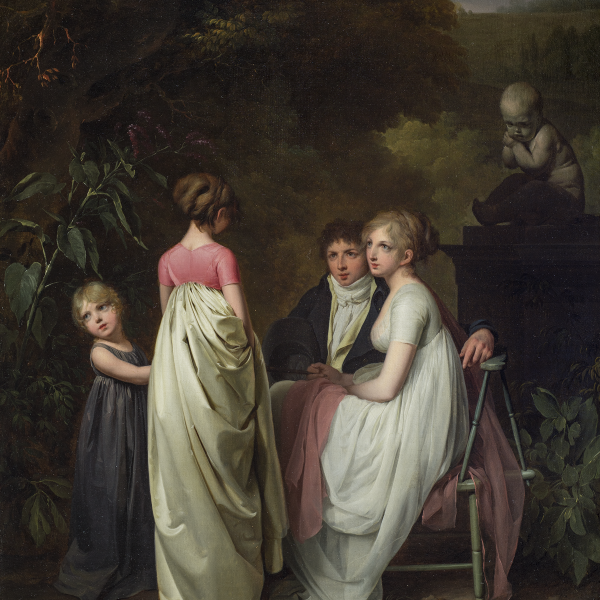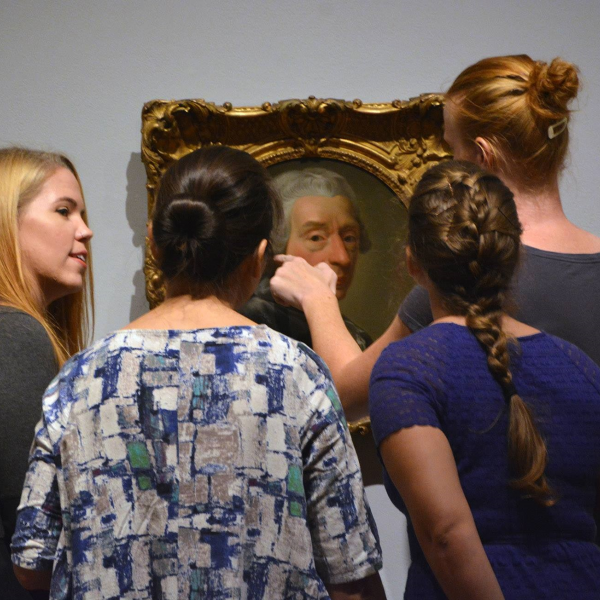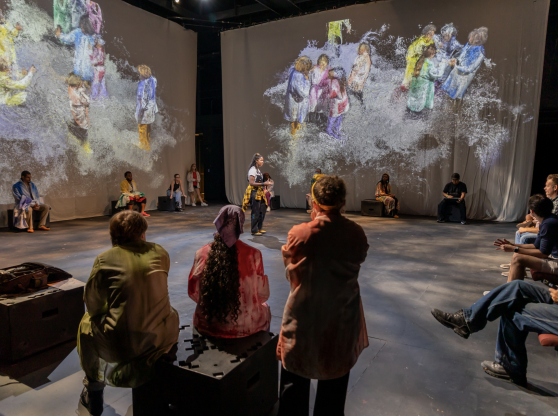As an art historian and professional academic, Dr. Melissa Hyde is used to expressing her ideas in words. That made it quite the challenge when the Harn Museum approached Hyde five years ago about guest curating an exhibition based on her 18th-century art research. After hours upon hours spent selecting pieces, constructing scale models and writing text, the exhibition is now open.
The exhibition, Becoming a Woman in the Age of Enlightenment: French Art from the Horvitz Collection, opened Oct. 6 and features nearly 120 works from prominent 18th century artists. Although the works vary in terms of style and genre, the exhibition aims to bring new insights to the questions of what it means to be a woman in this period and consider what issues have persisted through time.
According to Hyde, this period invented the modern family and the collective understanding of women’s roles. This means that once guests get past the “ooh’s” and “aah’s” of the beautiful objects, it becomes an opportunity to see if things really have changed.
“I find it comforting to know the questions we’re wrestling with have always been hard for people to answer,” she said.
Before she was a professor of art history at the University of Florida, Hyde always held an interest in how women have been written into history. She studied the cultural history, gender studies and feminist theory found within 18th and 19th century European art. This, coupled with the connection between the Harn and the Horvitz Collection, led to Hyde curating her first exhibition.
Hayley Jones, UF alumna and former student of Hyde’s, was already looking forward to seeing the exhibition. The topic reminded her of her favorite undergraduate seminar, Women and Artists in 18th-century French Art, and the lasting impression Hyde’s teachings left on her. Upon discovering her former professor curated the exhibition, Jones was even more eager to visit.
“She has such a gift for cultivating interest in art as if it’s something we can dive into and get to know on a personal and more intimate level than just reading words in a textbook,” Jones said. “I’m sure this exhibit will enlighten viewers and ignite a greater love for art in them the same way her course was able to do for me.”
To this day, Hyde is still reluctant to accept the title of curator, but she said she has a newfound appreciation for the intellectual and logistical parts that go into the role. She and the late Mary Sheriff, Hyde’s co-guest curator, traveled several times to Boston, where Jeffrey Horvitz’s private collection is located. It was through these trips that they were able to establish the thematic sections for the exhibition. She spent a summer learning how to write wall tags and labels and the better part of fall semester writing the catalog essays.
Aside from the obvious thematic and artistic decisions, she had to decide miniscule details like the color of the walls, the spacing between the pieces and deal with the inevitable and immersion-breaking fire alarms and speakers.
“I have a very healthy respect for what curators do now in a way that I had no clue before,” she said with a chuckle. “I mean it’s a monumental amount of work to put on an exhibition.”
Whereas most curators propose the concept for an exhibition and make costly efforts to acquire works of art to fit their vision, Hyde and Sheriff based their project on the thousands of drawings and artworks within one collection. Sadly, Sheriff passed away a year before the exhibition’s opening.
To honor Sheriff’s memory, a symposium—or mini conference—is taking place on Oct. 20 and 21. The symposium, Thinking Women: Art and Representation in the Eighteenth Century, will feature a keynote speech by Dr. Lynn Hunt, a research professor from the University of California, Los Angeles, followed by research presentations related to questions raised by the exhibition.
After visiting the exhibition, guests are encouraged to attend the Harn Museum’s Museum Night: Wonder Women on Nov. 9, where an actor in costume will perform a dramatic reading of the catalog essay Hyde wrote in the voice of a fictional 18th century artist named Adele Pastel.
Guests can also attend any of the three Films Under the Stars showings at the UF Fine Arts Plaza. On Oct. 12, 19 and 26 there will be showings of Dangerous Liaisons, Marie Antoinette, and Kamikaze Girls respectively.
The exhibition will be on display until Dec. 31. From there, the exhibition will move to Ackland Art Museum in the University of North Carolina, Chapel Hill, where Sheriff was a professor of art history. UNC will also hold a sister symposium in her honor.






